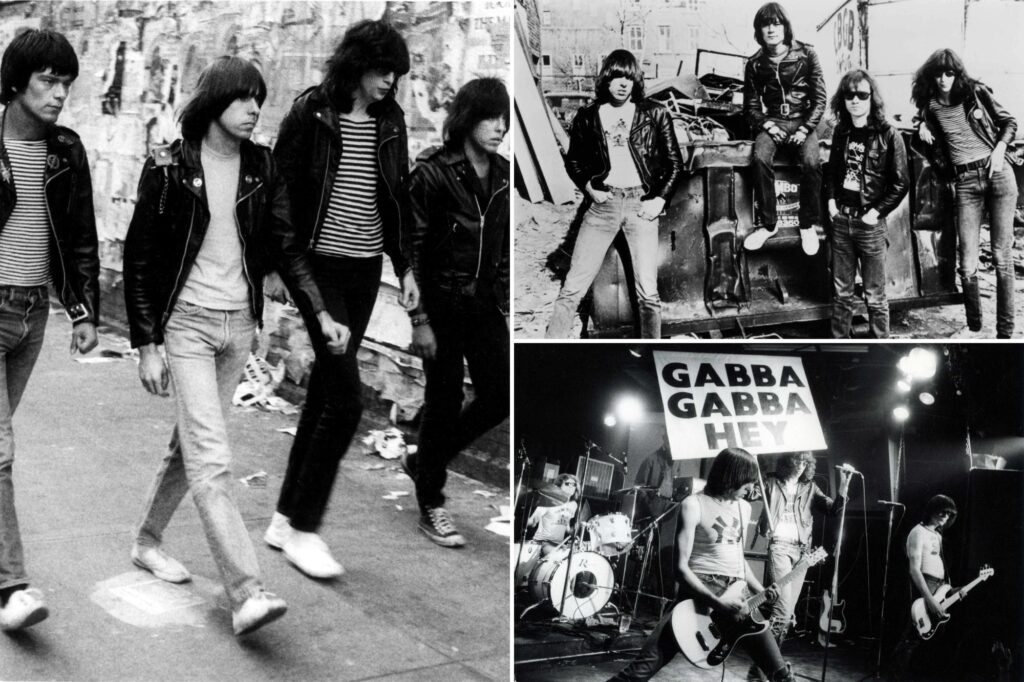True to the raw, anarchic spirit of punk-rock, the Ramones played as dirty as those notoriously filthy CBGB bathrooms when they got a spontaneous offer from their first manager at the holy underground in New York’s East Village in 1975.
“They wanted to be in my column in the SoHo Weekly News. And I kept saying, ‘I can’t make it,’ ” legendary Ramones manager Danny Fields told The Post about seeing the iconic New York band at the club that they first played 50 years ago on Aug. 16, 1974. “But when I finally did, I went back to the dressing room before they went onstage and said, ‘Hello, I’m Danny, and I’m here.’”
That fateful introduction would rock Fields’ — and music’s —once the Forest Hills, Queens foursome of lead singer Joey, guitarist Johnny, bassist Dee Dee and drummer Tommy Ramone hit the stage.
“The first words out of Joey’s mouth were, “I don’t wanna go down to the basement,’ ” recalled Fields of a lyric that would serve as the title of the seventh track on the Ramones’ 1976 self-titled debut.
“And I went, ‘Holy shit!’ That was the smartest and funniest thing I ever heard. So immediately I get that they have a sense of humor.”
Fields was also instantly struck by their sense of style.
“It was the presentation — they looked alike,” he said. “They dressed the same — they all wore leather jackets and jeans, They tried to get the hair to look alike. It’s just hits you intuitively: This is very clever of them, and this moves along the process of introducing them.”
But in the end, it was all about the magical musical mayhem he spotted on that soiled stage.
“I was kind of speechless,” Fields said. “I thought they were the most perfect band I ever saw. They had everything down. They tore through one great song after another, and they didn’t stop.”
After the show, a “blown away” Fields went back to that dingy dressing room.
“And Tommy said — like, nervously — ‘Do you think you’ll be able to mention us in your column now?’ And something came over me, and I said, ‘I want to manage you.’ I don’t know where that came from.”
Then the hustling Ramones made Fields a counter-offer that he couldn’t refuse.
“Johnny Ramone said to me, ‘I’ll tell you what: We need $3,000 to buy drums. If you get us $3,000 you can be our manager,’” Fields said.
The sum — about $20,000 when adjusted for inflation today — sent Fields on a mad cash dash. “I went to visit my recently widowed mother in Florida, and I said, ‘Can I borrow $3,000?’ And she took out her checkbook, and she says, ‘I hope you know what you’re doing.’ ”
He sure did. Even though Fields was no fool — it wasn’t about the drums: “It was enough money to get them through the next few months.”
Still, that dressing-room deal paid big dividends for all involved.
The Ramones — who took their common last name from a hotel alias that Paul McCartney used with The Beatles — were signed to Sire Records after A&R man Craig Leon also championed them from his CBGB discovery of the quartet.
“I just thought they were hilarious,” said Leon, who went on to produce 1976’s “The Ramones.” “They were like a cartoon version of a rock band, which was the inverse of everything that was happening at the time — you know, everybody was so serious. Bands were doing rock operas and looking down their noses at regular rock ’n’ roll.”
Indeed, the Ramones — all of whose original members have passed away, but live on in Rock & Roll Hall of Fame immortality— led a punk revolution that started at CBGB 50 years ago.
David Godlis — a photographer who regularly shot the band at their home club from 1976 to the original lineup’s final CBGB show on May 4, 1978 — put their impact this way: “We all thought the Ramones were gonna be as big as The Beatles.”

